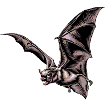Museum, University of Nebraska State

University of Nebraska State Museum: Mammalogy Papers
Document Type
Article
Date of this Version
1983
Citation
Mammals of the Northern Great Plains, J. Knox Jones, Jr. David M.Armstrong Robert S. Hoffmann, and Clyde Jones (Lincoln: University of Nebraska Press, 1983).
Abstract
For the purposes of this book, the Northern Great Plains are defined as the states of Nebraska, North Dakota, and South Dakota. As a physiographic concept, the northern part of the great interior grasslands of North America is, of course, much broader in geographic extent than the Dakotas and Nebraska, but the three states lie in the heart of the region, and thus the title for this work seems appropriate. Our expectations in writing Mammals of the Northern Great Plains were to provide a comprehensive, yet semitechnical, treatmeat of free-living mammals that would prove useful to specialist and nonspecialist alike. The content and style therefore were developed in a way we hope will interest the inquiring high-school student, on the one hand, and provide a point of reference for the professional mammalogist on the other. Between these extremes, wildlife biologists, conservationists, environmental specialists, college students of vertebrate zoology, and others interested in mammalian natural history should find the present treatment useful for their needs as well.
In the accounts that follow, species of each genus are listed in alphabetical order. Genera, families, and orders are arranged in conventional phylogenetic sequence, and treatment of these higher taxa is deliberately brief. Readers desiring more detail should consult the synopsis by Anderson and Jones (1967) for orders and families and that of Walker et al. (1964 and subsequent editions) for genera. Both scientific and vernacular names of species generally follow Jones, Carter, and Genoways (1979). Information in the accounts of species is organized under five headings: Name, Distribution, Description, Natural History, and Selected References. In the first section, comment is made on the derivation of the scientific name of the species; often, alternative vernacular names are provided. The section on distribution describes the general geographic and ecological range of a species. Subspecies (if recognized) are listed in this section. The geographic ranges of most species are mapped, based on the currently known distribution; the maps, however, are deliberately conservative, and additional fieldwork in various parts of the region certainly will extend the known limits of many mammals. In several cases where too few specimens of a species have been reported to allow the distribution in the tristate region to be shaded with confidence, only the actual localities of record are indicated.


Comments
"Copyright 1983 by the University of Nebraska Press." (Out of print)